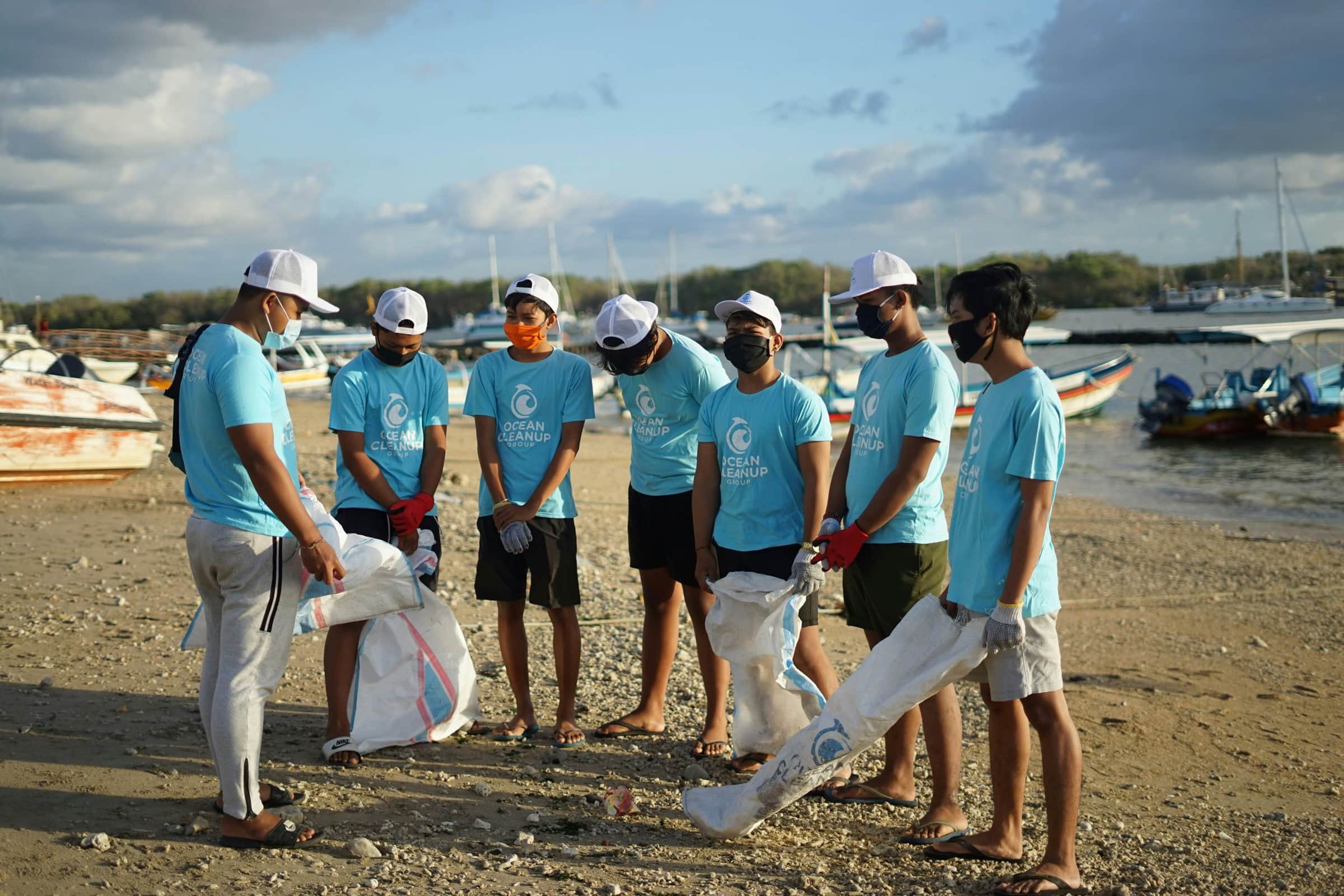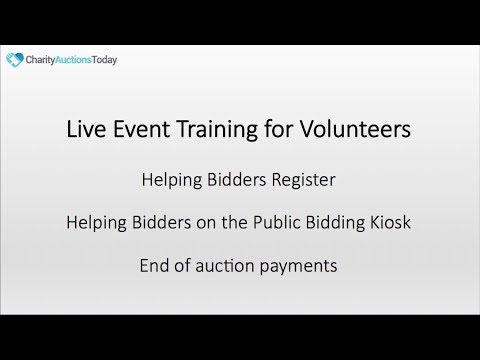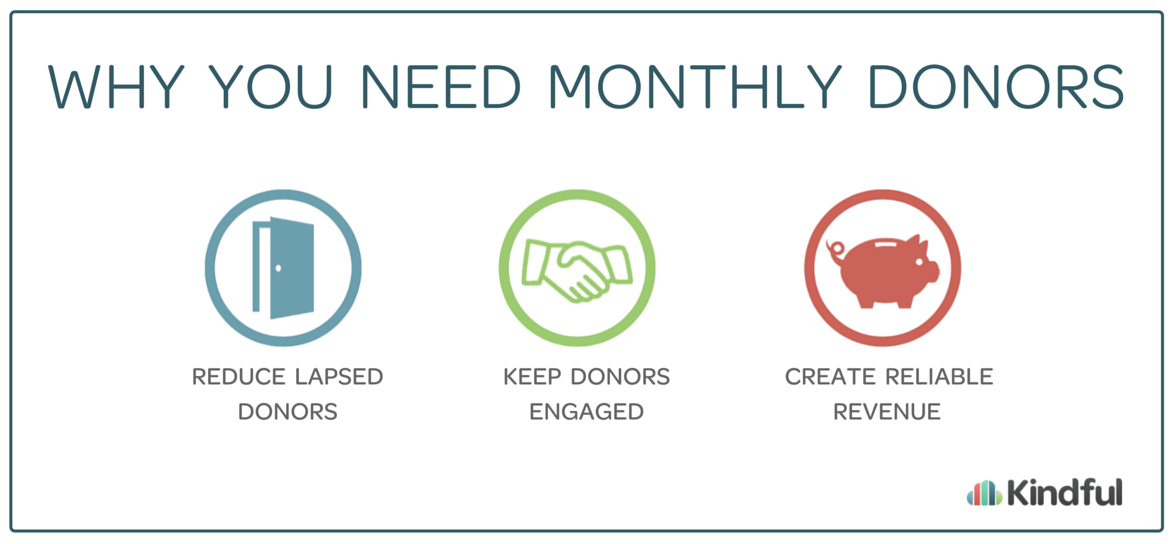Managing Fundraising Volunteers
You may have more VOLUNTEERS than you know what to do with or you may have trouble finding volunteers. Either way, you will need to get organized and find a way to manage volunteers. Managing volunteers is challenging. It is a full-time job with benefits! Often, every volunteer signs up of the same job. They are only volunteering because the job looks fun or will look good on a resume. Your job is to find a way to entice them into other positions that aren't so fun, but are oh so neccessary. Good luck with that! Volunteer Fundraising Managment is a skill. You can learn how to mangage volunteers like a pro with these tips.
First, you will need to idenitfy your needs. What do you want to accomplish with your volunteers. Will volunteers with special skills take on roles of skilled staff? Will volunteers only be allowed in certain areas of operations?
Turn Volunteer Energy Into Fundraising Momentum
You know how to recruit, manage, and motivate volunteers. Now integrate their power with your fundraising—launch an auction where volunteers help engage supporters and power giving.
Launch Your Volunteer-Driven AuctionBefore you can assign volunteers to positions, you need to find volunteers. How do you go about doing that?
Recruitment
- First, send out an email or newsletter request. Don't just send it to your staff. Send it to parents or members of your organization. Ask them to volunteer or to share names and emails of people they know who might like to volunteer.
- Go to your social media pages. Don't have them? Set them up... yesterday. You'll want a Facebook and Instagram to start. Pinterest and Twitter are helpful too. Pinterest, is a great way to share ideas with volunteers. Facebook and Twitter are perfect for finding volunteers, and Instagram is a fun place to promote your activities. Once you have a social media platform- start posting your needs. What fun volunteer positions do you have available? What are the rewards? Share it, and they will come.
- Resort to begging or bribing if you have to. Beg close friends and family to help. Beg them to ask their friends. If they are on the fence, bribe them. Find someone willing to donate food or gift certificates to your volunteers. The donation process is the same as for getting items donated for a silent auction. Just make a note that these items are specifically for the wonderful people who have donated time to help out the organization.
- When the volunteers start responding, it is time to interview. Ask why they want to volunteer? How would they be a good fit for your organization?
Hiring
- Get to know your volunteers. Everyone needs to fill out an application. Interview them as you would any employee applying for a position. Know their skills. This way, you will have the best person for the coveted job. If someone else complains, you can explain your choice. Getting to know your volunteers will allow you the benefit of having a toolbox full of helpful staff for future endeavors. You'll find someone who is perfect the job.
- Back ground checks are essential. Be sure to check on volunteers just as you would employees. No one is allowed to volunteer around children until they've had a formal background check. It also doesn't hurt to check up on them on social media. What are they posting? This is the easiest way to weed out any shady characters. Unfortunately, even when you have a shortage of volunteers, you can't take just anyone. It is better to be safe than sorry.
- Job description. What do you expect? What do they expect? Volunteering isn't all fun and games- even if you're playing fun games! Set clear guidelines, and put it in writing. It doesn't hurt to have a hand-out ready. Have everyone sign a contract that lists exactly the dos and don't of the job. Don't let them say, "no one told me". Tell them, and tell them again! A good rule to start off is no use of mobile devices (don't just say cell phones- they'll get you on a technicality).
- Non-Discloure agreements. Sometimes you have proprietary info that you don't want released until the big day. You may have business or product secrets. Have every volunteer sign a non-discloure agreement.
- Policies and procedures. It doesn't hurt to share you organization's policies and procedures with volunteers. You might want to have a training session before the big day.
These steps may seem obvious, but not every non-profit follows them. It is difficult to get volunteers organized in one place at one time. Make training days mandatory. You may feel like you are doing well just to have volunteers show up the day of the event. We get it. Keeping it professional can make or break your efforts.
If you want your volunteers to keep coming back year after year, it is important to know and utilize their skill set. It is even more important to say thank you. Things get busy. It is often difficult to find time in person. Make sure volunteers know you appreciate them. After the event, send a thank you note with a token of appreciation and an event evalution form.
Send reminders to return those forms. Post the forms on your Facebook page. Do your due diligence to get the forms answered and returned. Then, make sure you read them. Take each response seriously, not personally. Evaluations serve as your program guide for coming events.
Recommended:
Effective Volunteer Management
Raising Money for Volunteer Management
Frequently Asked Questions
What is volunteer fundraising management?
It’s the process of recruiting, training, equipping, and supporting volunteers to raise money for your cause—through events, peer-to-peer pages, ambassador outreach, and workplace or community campaigns—while tracking activity and results.
How is volunteer fundraising management different from basic volunteer coordination?
Coordination fills shifts. Fundraising management sets revenue goals, gives volunteers tools to ask for gifts, and measures dollars raised, not just hours served.
What are the first steps to launch a volunteer fundraising program?
- Define a clear goal (e.g., “$50,000 by June 30”).
- Choose channels: peer-to-peer, events, ambassador outreach.
- Create role cards and a simple training kit.
- Publish a mobile-first donation or P2P hub with QR + short link.
Which volunteer roles most directly drive fundraising results?
- Ambassadors: share links, host mini-events, secure matches.
- Peer-to-peer captains: recruit team members and set goals.
- Procurement leads: secure sponsors, prizes, and auction items.
- Event revenue team: mobile bidding help, paddle raise spotters, checkout.
How do we recruit volunteer fundraisers quickly and effectively?
- Invite donors, board, alumni, and past volunteers first (warmest list).
- Offer micro-roles (“Raise $250 from 5 friends this month”).
- Show a simple “how to ask” script and 3 sample messages.
What should fundraiser training cover to boost confidence? (General information)
- Your one-minute story and impact talking points.
- How to use donation links, QR codes, and share kits.
- Simple ask scripts, follow-ups, and thank-you etiquette.
General information only.
What tools do volunteer fundraisers need? (General information)
- Mobile-first donation/P2P pages with wallet pay.
- Short links, QR codes, and pre-made social images/captions.
- Basic CRM or spreadsheet to log outreach and gifts.
General information only.
Which KPIs should we track for volunteer fundraising? (General information)
- Total raised vs. goal and % to date.
- # active fundraisers and average raised per fundraiser.
- Donations per outreach and share-to-donation conversion rate.
General information only.
Do incentives help, and how should we recognize fundraisers? (General information)
Yes—use milestone shout-outs, leaderboard badges, and small prizes funded by sponsors. Pair recognition with impact stories so it feels meaningful. General information only.
How do we protect our brand when volunteers are fundraising? (General information)
- Provide a short brand guide (logo, colors, do/don’t examples).
- Supply approved images and copy blocks.
- Review any public pages or flyers before posting.
General information, not legal advice.
What are best practices for handling donations and receipts? (General information)
Use the online donation page whenever possible to avoid cash handling. If taking checks, provide clear instructions and log them promptly. Send immediate receipts with organization info. General information, not financial or tax advice.
How should we manage donor data collected by volunteers? (General information)
Collect only what’s needed, store in approved systems, and honor opt-in/opt-out preferences. Avoid personal spreadsheets with sensitive data. General information, not legal advice.
How do we schedule volunteers into high-impact fundraising roles? (General information)
- Prioritize roles tied to donations (ambassadors, captains, revenue spots at events).
- Use self-serve signups with reminders and easy swaps.
- Assign a shift lead who tracks KPIs during the event.
General information only.
What’s a simple communication cadence that keeps fundraisers active? (General information)
- Weekly tips & tools email during the campaign.
- Quick mid-week text reminder for active fundraisers (with consent).
- Friday shout-outs and leaderboard to build momentum.
General information only.
How should we structure a peer-to-peer campaign for volunteers? (General information)
Create teams with captains, set a default goal (e.g., $500 each), and provide page templates with photos, copy, and suggested amounts. General information only.
What belongs in a volunteer fundraiser share kit? (General information)
- Two branded images (square and vertical) and a short video clip.
- Three copy-and-paste captions and one email template.
- A short link + QR and a one-minute impact story.
General information only.
How do we coach volunteers who aren’t meeting goals? (General information)
Offer a quick 1:1 to review their page, refine the ask, and set a tiny next step (e.g., “Send to 5 contacts today”). Provide a success example and follow up in 48 hours. General information only.
What keeps volunteer fundraisers coming back next year? (General information)
- Fast thank-yous, transparent results, and specific impact stories.
- Recognition moments and a path to leadership (captain, committee).
- Early invites to exciting projects and events.
General information only.
Any risks we should plan for when volunteers solicit gifts? (General information)
Provide talking points, a do-not-contact list if applicable, and clear rules on cash/raffles/auctions. Require staff approval for public promotions. General information, not legal advice.
Do you have a quick checklist to start volunteer fundraising this month?
- Set a goal and pick channels (P2P, ambassadors, event).
- Create 3 role cards and a 1-page training guide.
- Publish donation/P2P hub with QR + short link.
- Send share kits; schedule weekly tips and recognition.
- Track KPIs; coach low-activity folks; celebrate wins fast.
💡 Try this in ChatGPT
- Summarize the article "Volunteer Fundraising Management" from https://ghost.charityauctionstoday.com/p/volunteer-fundraising-management/ in 3 bullet points for a board update.
- Turn the article "Volunteer Fundraising Management" (https://ghost.charityauctionstoday.com/p/volunteer-fundraising-management/) into a 60-second talking script with one example and one CTA.
- Extract 5 SEO keywords and 3 internal link ideas from "Volunteer Fundraising Management": https://ghost.charityauctionstoday.com/p/volunteer-fundraising-management/.
- Create 3 tweet ideas and a LinkedIn post that expand on this Volunteers topic using the article at https://ghost.charityauctionstoday.com/p/volunteer-fundraising-management/.
Tip: Paste the whole prompt (with the URL) so the AI can fetch context.
Tom Kelly
Tom Kelly, TEDx speaker and CEO of CharityAuctions.com, helps nonprofits raise millions through auctions and AI. He hosts The Million Dollar Nonprofit podcast and inspires leaders to live their legacy, not just leave it.
Table of contents
Create Your Auction
Raise 40% more with smart bidding tools






